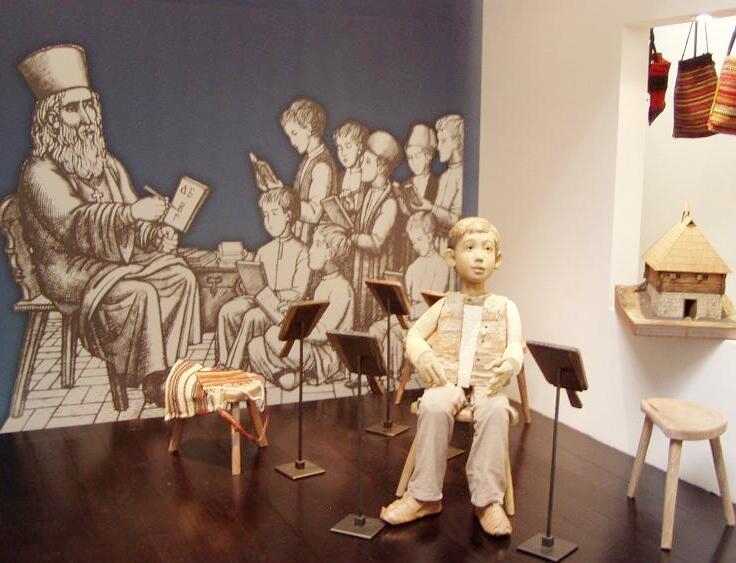
Figure 1.--We are unsure here just what period the recreation here is meant to represent. The pants the boys are wearing suggest it is not medieval. Perhaps it is a 18th century scene during the Ottoman era. |

|
Ottoman armies, even before the fall of Constaninople, began moving into the Balkans. The Otooman victory at Kosovo Polje (1389) ushered in an era of Ottoman comtrol over the Balkans. Serbia became an Ottoman province. We are not yet sure how the Ottomon conquest affected education in Serbia. There was no Otttoman state education system. The Ottomans did apparently allow local comminities and religious groups to operate schools. Only a minority children would have received any formal education during the Ottoman period. While a minority, the Catholic church played an important role in the development of Serbian education. The Jesuit School was founded in Belgrade (1609). The Catholic Church founded a teacher's college in Vojvodina, an area wih a Catholic Hunagrian minority. The Teacher's College in Subotica was the first European-style institution of higher education in Serbia (1689). During the Napoleonic Wars in Europe (1799-1815).
Ottoman armies, even before the fall of Consaninople, began moving into the Balkans. The Otooman victory at Kosovo Polje (1389) ushered in an era of Ottoman comtrol over the Balkans. Serbia became an Ottoman province. The Ottomans were a mulicultural empire. The Ottoman Turks who comtrolled the Empire were a minority. Arabs in the Middle East and North Africa were one large group and the various Balkan peoples were another large minority. Other groups included the Armenians and Kurds. There was a substantial degree of tolerance for the various groups which composed the Empire as long as they did not challenge Ottoman political control. The Ottomans were generally more tollerant than the Christian West. This is not to say that the Ottoman Empire was not capable of intolerance abnd brutality. It is to say that by contemporary standards the Ottomans were relatively tolerant compared to the Christan West. This only began to chanfe with the Enligtenment (18th cedntury). The Ottomans and the Muslim world in general has never expeienced a movement similar to the Enlightenment.
We are not yet sure how the Ottomon conquest affected education in Serbia. It occurred at a time before the modern system of public education developed. What education that existed in Serbia was in the hands of the Church. There was no Otttoman state education system for the general public. Some Balkan people converted to Islam, but this seems to have been a small minority. The Ottomans did seize Christiand boys for service as Janissaries. As slaves of the Sultan they received a through education. We do not know what provision was made for the education of those who converted. There may have been madrashs set up by mosques. The Ottomans did apparently allow local comminities and religious groups to operate schools. As far as we know, they did not interfere in the schools set up by the monasteries and other religious groups. Only a minority of Serbian children would have received any formal education during the Ottoman period. While a minority, the Catholic church played an important role in the development of Serbian education. The Jesuit School was founded in Belgrade (1609). The Catholic Church founded a teacher's college in Vojvodina, an area wih a Catholic Hunagrian minority. The Teacher's College in Subotica was the first European-style institution of higher education in Serbia (1689). Ottoman authorities allowed the Catholics to set up the school. During the Napoleonic Wars in Europe (1799-1815).
Related Chronolgy Pages in the Boys' Historical Web Site
[The 1880s]
[The 1930s]
[The 1940s]
[The 1930s]
[The 1940s]
[The 1950s]
[The 1960s]
[The 1970s]
[The 1980s]
Related Style Pages in the Boys' Historical Web Site
[Long pants suits]
[Short pants suits]
[Socks]
[Eton suits]
[Jacket and trousers]
[Blazer]
[School sandals]
Navigate the Boys' Historical Clothing Web Page
[Return to Main Serbian school history page]
[Return to Main Serbian school page]
[Return to Main Serbian page]
[Return to Main Serbian history page]
[Introduction]
[Activities]
[Biographies]
[Chronology]
[Clothing styles]
[Countries]
[Bibliographies]
[Contributions]
[FAQs]
[Glossaries]
[Images]
[Links]
[Registration]
[Tools]
[Boys' Clothing Home]
